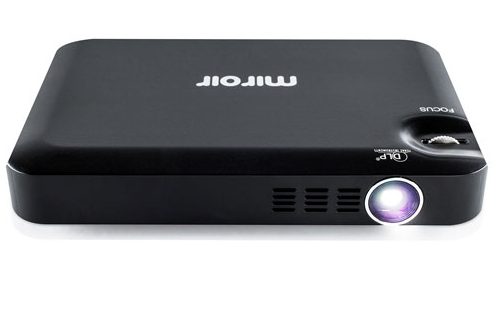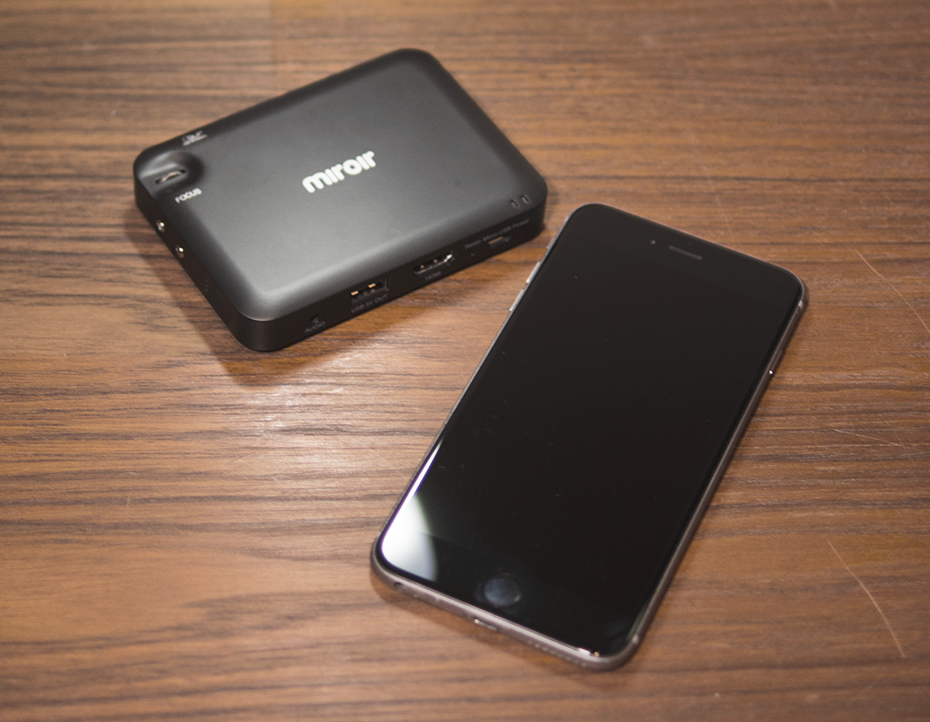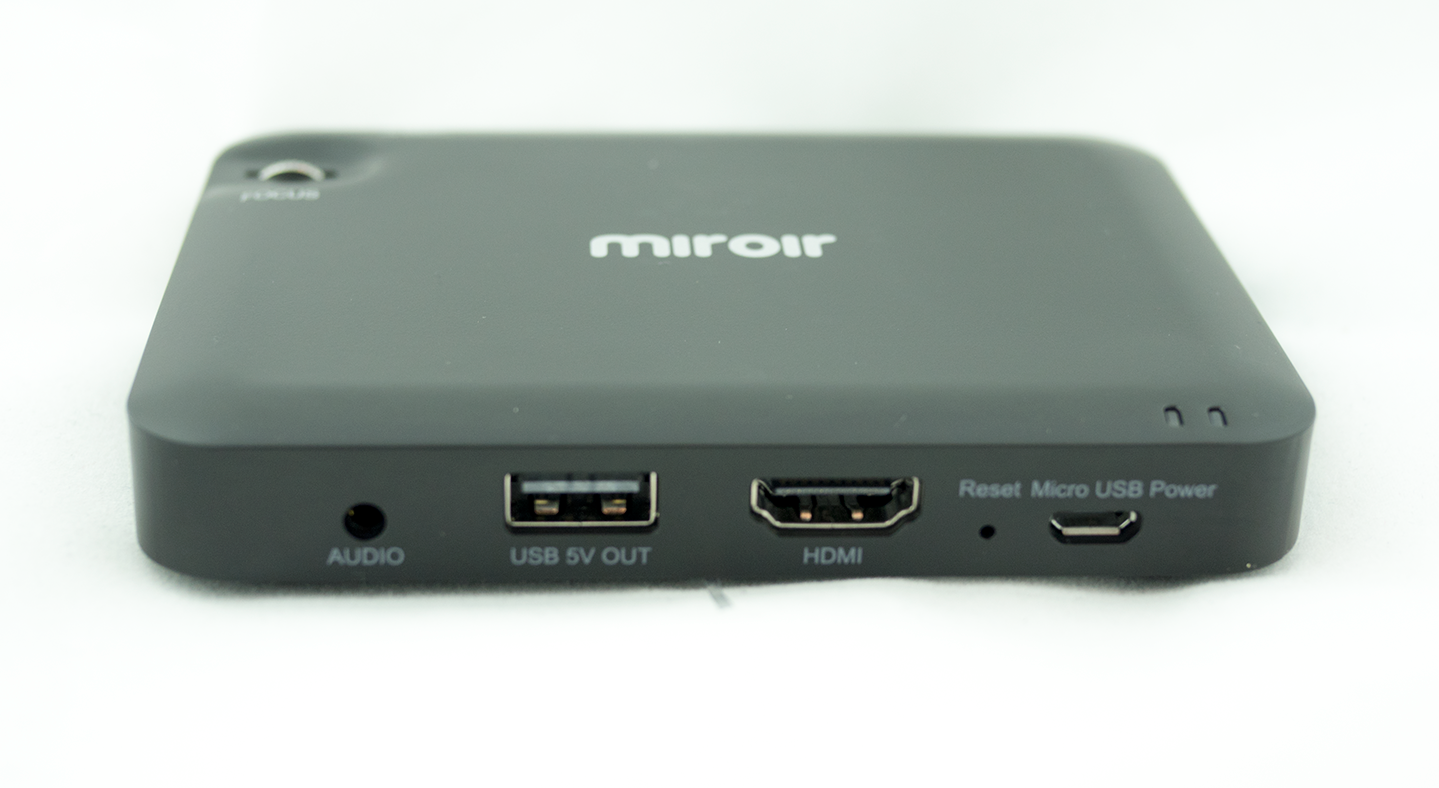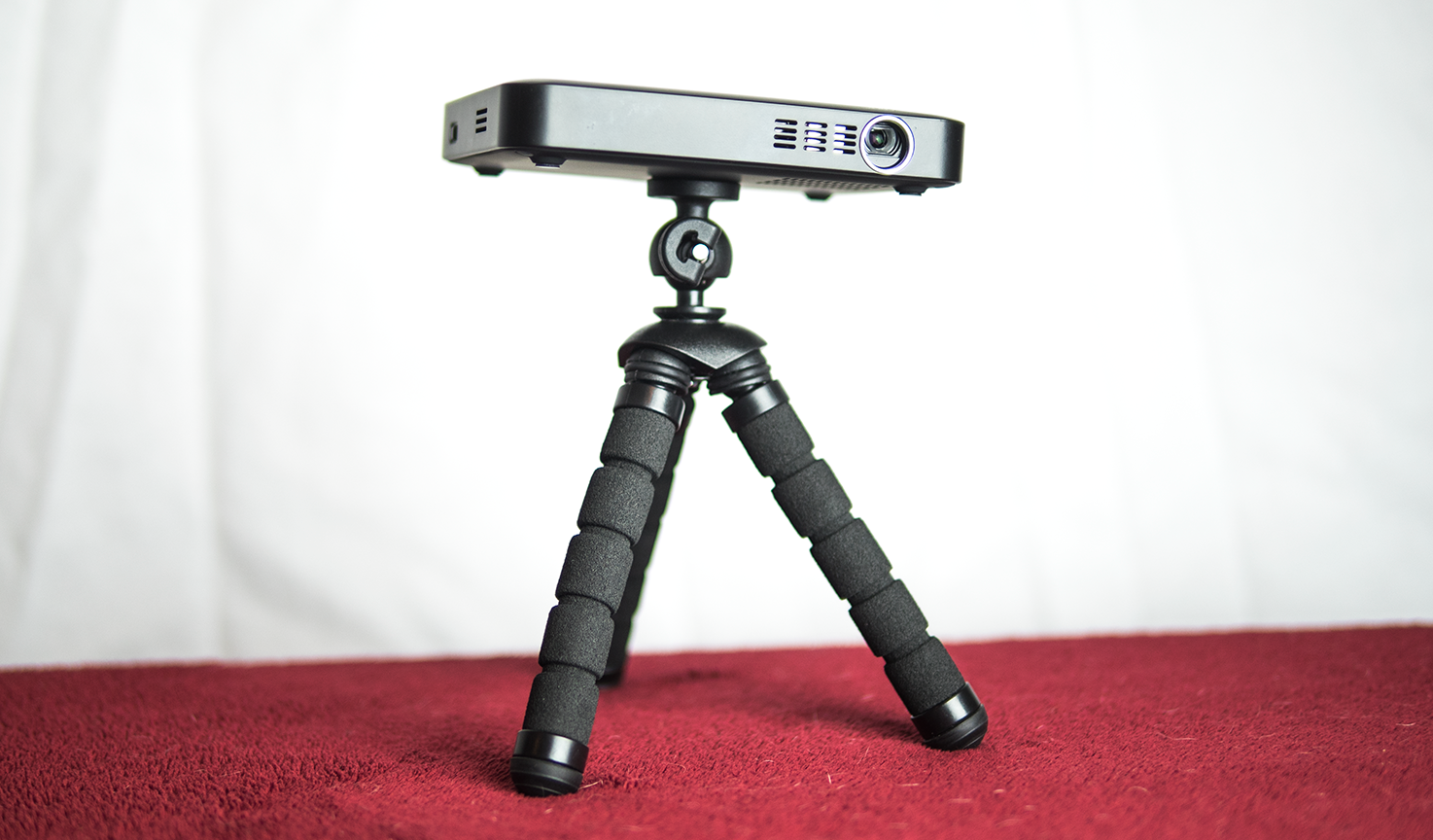 When it comes to technological innovation over the past decade, I seem to recall a lot of attention paid to the idea of mobile projecting. Whether watching fantastical YouTube mock ups of mobile phones that could project images onto a nearby surface or reading discussions about pocket sized video projection units, they were still the promise of tomorrow’s tech. Well, tomorrow is today and the dream is now a reality as the Miroir (French for mirror if I’m not mistaken) M55 Micro Projector literally puts the power of LED projection in your pocket.
When it comes to technological innovation over the past decade, I seem to recall a lot of attention paid to the idea of mobile projecting. Whether watching fantastical YouTube mock ups of mobile phones that could project images onto a nearby surface or reading discussions about pocket sized video projection units, they were still the promise of tomorrow’s tech. Well, tomorrow is today and the dream is now a reality as the Miroir (French for mirror if I’m not mistaken) M55 Micro Projector literally puts the power of LED projection in your pocket.
The idea of mobile projection likely began in response to those professionals who make their living travelling and doing presentations. Walking cold into any building, business, or office and quickly and effortlessly having the ability to project a presentation is, at best, a coin toss. While many places do have rooms equipped for such an endeavor, most do not and a handy mobile response may have given birth to the dream of a pocket sized projector. The first “mobile” projectors on the market were simply regular projectors that hadn’t been affixed to a ceiling yet and came in a padded carrying case. Not exactly mobile or user friendly. While they certainly did help you with the ability to project images, presentations, or videos onto a screen or wall, there was still a requirement of preparation and space that could ultimately make the spontaneous presentation impossible. The Miroir M55, Micro Pocket Projector is the direct response to that concern.
Miroir Micro Projector specifications

The M55 isn’t called a “Micro Pocket Projector” without reason. It measures a miniscule 4.25 inches wide (10.8 cm), 3.1 inches deep (7.9 cm), and when laid out flat, isn’t even ¾ of an inch thick (1.8 cm). You can literally slip this into the pocket of your shirt, pants, or jacket but will likely slip it easily into one of the pockets in your bag, briefcase, or purse. The photo above shows it in comparison to my iPhone 6+ in order to give the size some context. Weight wise the M55 comes in at only 198 grams or just shy of 7 ounces.
The M55 uses DLP and LED technology for the projection. DLP being Texas Instrument’s Digital Light Processing that uses mirrors (often with a spinning colour wheel) to reflect light and was all the rage a decade ago as the shift started from standard definition rear projection TVs to the emerging (circa 2006-ish) breed of HD models. LED refers of course to Light Emitting Diode and references the light source used in most of our current electronics. The M55 uses a combination of DLP and LED technologies to ultimately send up to a 50 inch picture from the projection unit to a nearby wall or screen.

Despite being incredibly small, lightweight, and portable, the M55 Micro Pocket Projector has several nifty features. It has a built in battery that can power the device for up to 2 hours while being used and can be recharged over USB. The image produced is in 16:9 aspect ratio, which is the primary aspect ratio currently available on most televisions and computer monitors. How far from the wall or screen the unit is set up will determine the size of your projection but the M55 is capable of producing a 50 inch focused image. The resolution available is 640 x 360 or essentially standard definition (SD) which is below high definition (HD). “Standard definition” is generally accepted as 640 x 480 but that is at a 4:3 aspect ratio so 640 x 360 reflects 16:9. I think. But any way you slice it, it’s not a high definition image but the M55 can accept an HD signal over HDMI although the resulting projection will be in 640 x 360 resolution.
The Miroir M55 Micro Pocket Projector has an HDMI input that allows you to connect desktop computers, laptops, phones and tablets (although these may require an adapter), or also connect streaming devices like Apple TV, Roku, or ChromeCast amongst others. It has built in speakers but if at all possible you will want to connect an external speaker (or headphones) through the 3.5mm jack on the back of the unit. There is also a USB port for charging and on the bottom of the device there is a screw mount for a mini tripod but as you can not flip the image like on most full sized projectors, you can’t “ceiling mount” the M55 but frankly, that’s not what you’d be buying it for anyway.
What can you do with a Miroir projector

There were some very cool things about the M55 that I liked a lot but there were a couple of shortcomings as well, so it will ultimately depend on what you would be looking for in a pocket projection unit. One of the things I liked was the versatility of inputs on the M55. The HDMI connection made it ridiculously easy to connect my MacBook Pro (with a mini display port to HDMI adapter) and project videos and PowerPoints. In the accompanying video you will be able to see, and hear, what I see as the M55’s weak point; its speakers. While it’s nice that it has a speaker, there is little reason I can see why you would really use it. Because it has a 3.5mm audio connection you can attach an external speaker and may of the units available are super small and compact while providing sound that is significantly better that what this unit produces. In the video I recorded the intro to the movie Office Space twice with my video camera. Using only the camera’s on-board microphone to record the audio produced by the M55 as well as the audio produced by my laptop. Not that my MacBook has dynamite sound but it is definitely superior to the M55’s. So in my estimation, external speakers (or headphones if using the projector alone) are the way to go.
As far as pulling the device out of your pocket or bag and projecting onto a wall or screen, it really couldn’t be easier. The HDMI input also let me connect a ChromeCast and an Apple TV and both worked great. With the Apple TV I was also able to AirPlay content from my iPhone and iPad with no issues. I am under the understanding that you can also project from your phone or tablet with an adapter – in my case I think I would need an HDMI to Lightning adapter – and thus bypass the Apple TV. Going through the Apple TV wasn’t an issue for me at home but where this might be an issue mobile wise in that the Apple TV needs to be plugged in so whereas the M55 can run on a battery. So if using on the go, you need to also cart around your mobile streaming device and ensure that it is able to be plugged in.

The picture quality was fine. It wasn’t anything dynamic and mind numbing, but the videos or presentations I watched were all HD quality files so what was projected wasn’t horrible either. Simply put, it is standard definition. The one thing that I should point out, and Miroir in fact addresses this on the front of the package, you kind of really need to have the room you are watching in as dark as possible, especially if watching video that is dark to begin with. This was less of an issue when I used it for PowerPoint displays as long as I used a lighter background and dark text.
Should you get a Miroir
So, it totally depends on what you are looking for in a mobile projector. The Miroir M55 micro projector can be a nice companion in your briefcase that in those situations where you really need to make a presentation and nothing else is available you can wow and amaze with this portable beauty. If you are hoping to grab this device and ditch your 65 inch 4K television, you are barking up the wrong tree. At the end of the day the M55 is light, versatile, easy to use, and gets the job done depending on what that job is. So if you think that the Miroir M55 Micro Pocket Projector could be the answer for you, I encourage you to head into your local Best Buy and check it out.




Ive had nothing but bad luck with my Mirroir device
I don’t recommend to buy.
I just buy on yesterday Sep 3, 2018 and don’t know how to use it.
Which = doesn’t work for me.
It can’t work by just simply connected. See!
Thanks for these pocket projectors! However, I’m not familiar with Miroir! It may be popular as a projector brand, but I haven’t seen it before! I have an AAXA pico projector that needs to be replaced because it lacks many advanced features including wi-fi capability. I’m looking for a good projector to replace my old one!
Comments are closed.